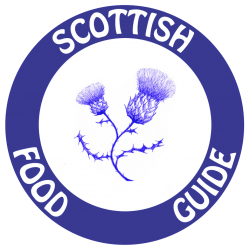Profile
This specific fold is rarely available at butchers however research is being carried out into another possible source. In the meantime, if seeking out Belted Galloway, ask about its provenance and look for pure bred.
There is written evidence there were Galloways in Wigtownshire 400 years ago and developed in the 17thC. Not all were black and white, some were Dun (brown) and white ‘Belties.’ Their shaggy coat and face give the Belted Galloway a ‘teddy bear’ appearance. Originally the family cow, bred for both meat and creamy milk.
Miss Flora Stuart, President of the Belted Galloway Society for 20 years and owner of Mochrum Estate, was devoted to Belties and on her death in 2004, bequeathed her land and cattle to her cousin Mr David Bertie, fellow rare breed enthusiast. Her grandfather John Crichton Stuart, 5th Marquis of Bute bought in the last original stock from foundation herds from 1890 pre dating the Galloway Herd Book, started in 1921. There are only 75 breeding cows left from that original herd. Without this herd the ‘Belties’ would be in danger of extinction from cross breeding.
Belties are able to forage wild grasses and natural herbs on the moors, turning rough hill pasture into the finest quality meat and are prized for their excellent eating qualities, finely marbled and succulent. Belties have a double coat of curly hair rather than the layer of backfat most other breeds require.
Mr Bertie says ‘It is a huge privilege taking on this world class herd and carrying on the breeding programme. It is a challenge to take it forward. We try to ensure the meat is recognised and that they graze on hill land as well as grassland. It is hung for at least 28 days and is the best meat there is.’
http://www.fondazioneslowfood.com/en/ark-of-taste-slow-food/original-belted-galloway-cattle/
photo: Scottish Farmer

